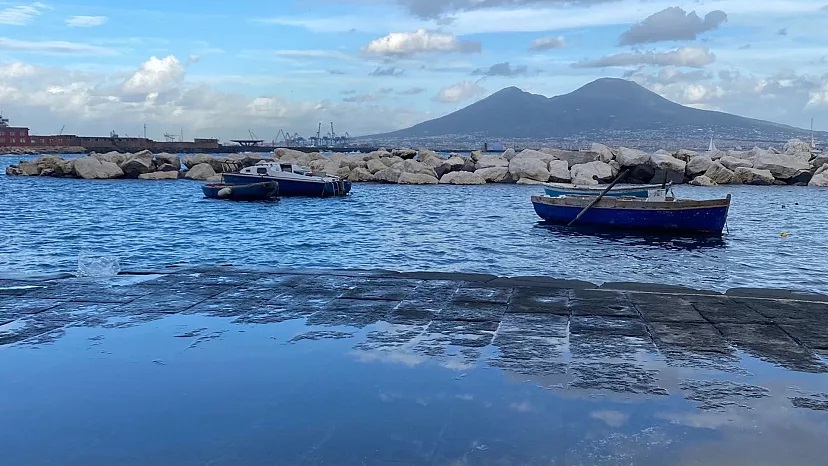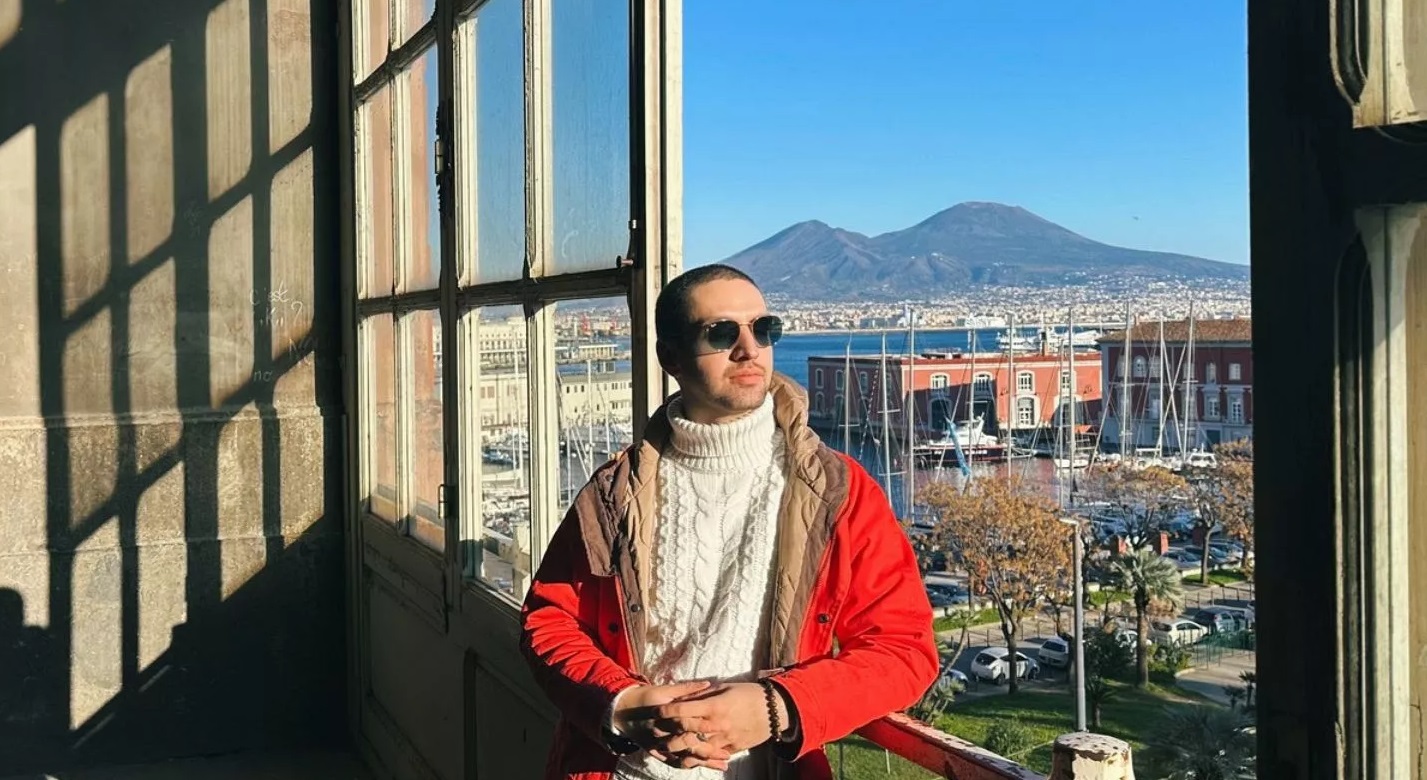Euronews Travel – ‘We will win back the heart of Italy’, says one local who’s aiming to shake Naples’ dirty image.
“See Naples and die!” The famous saying, popularised by 18th-century German writer Goethe, is an affectionate nod to the beauty of the southern Italian port city, enveloped by its cerulean bay and crowned by Mount Vesuvius.
But nowadays, the catchphrase has taken a whole new meaning.
As the much-maligned epicentre of Italy’s ferocious Camorra gang, Naples often tops tourists’ naughty list of no-go cities.

While Naples may have once been the glorious capital of a kingdom – testified by its opulent architecture and esteemed culinary creations – much of this has faded in comparison to the incessant trashing it gets in the press.
News of the city is often accompanied by lurid images of urban decay and squalor. Roberto Saviano’s popular ‘Gomorrah’ investigative journalism series, depicting the grittiness of life in the Neapolitan suburbs, has further helped consolidate its image as a crime-ridden and trash-laden urban jungle.
It comes as little surprise that tourists generally steer clear of Naples, merely stopping en route to Capri and Amalfi’s beaches or Pompeii’s ruins.
But now that Naples and its residents are actively fighting to shake off its bad image, is it time we embraced the unspoken beauties the city has to offer and lay negative stereotypes to rest?
Here’s why Naples should top your travel bucket list in 2024 – and why it’s criminal to skip it.
From Baroque churches to hidden alleyways: Naples’s artistic wonders
Following Naples’ historical fall from grace, the city’s long struggle with poverty and crime has led it to be rejected by Italians and tourists alike.
Indeed, rejection is at the heart of the city’s very own founding mythology. As legend has it, the siren Parthenope killed herself after being rejected by Odysseus, and was washed to the shores of what would later become Naples.
Like many, I came to the city with deep-seated preconceptions. But I left with an entirely different view.
If nostalgia is Italy’s currency, chaos its heartbeat, football its religion, and religion its mask, nowhere better encapsulates this than Naples. It’s the city’s unique juxtaposition of glamour and grit that make it so intriguing.

If you head to the city’s grand seafront promenade, all the way to the neoclassical colonnades of Piazza del Plebescito, the majestic Palazzo Reale (royal palace) and San Carlo opera house, you will get a taste of the Neapolitan aristocracy and all its pomp.
Hidden behind the grandeur, on the other hand, lie the working-class Quartieri Spagnoli (Spanish Quarters). A tight maze of alleyways, the neighbourhood offers a concentrated burst of colour (azure, the colour of the SSC Napoli football team, predominates) and Neapolitan street life where the local dialect – rather than Italian – is the unofficial language.
Lovers of all things holy may eschew Naples in favour of Rome, where you can take your pick from 900 churches, but the southern Italian city has plenty to offer too.
From paleo-Christian catacombs to the medieval tiled cloisters of Santa Chiara and the Baroque magnificence of the Gesù Nuovo church, the city has more than enough to keep any architecture aficionado occupied.
Unlike in Rome, where religion is theatrical but sometimes lacks substance, it’s in the blood and bones of Neapolitan life.
So much so that every 16 December, the city’s residents anxiously wait for the patron Saint Januarius’s dried blood – stored at Naples Cathedral – to liquefy as a signal of good fortune in the coming year (rest assured, 2023 brought good news).
A foodie paradise: What are the best things to eat in Naples?
At the risk of igniting culinary wars, I’d back Naples as Italy’s food capital (Bologna a close second).
It’s the city that gave us pizza after all, with the Margherita – created to honour Italy’s queen in 1889 – being a time-honoured staple at renowned pizzerias like Da Michele or Gino Sorbillo.
But Naples has far more to offer than a single dish. At its heart, Neapolitan cuisine is fresh street food that has benefitted from an enviable location.

A stone’s throw from the sea and an hour’s drive from Amalfi’s fragrant orchards, Naples has access to exquisite natural produce, giving us unfussy recipes such as spaghetti alle vongole (clam spaghetti), pasta alla puttanesca (pasta with capers and anchovies), risotto alla pescatora (seafood risotto) and insalata caprese (mozzarella and tomato salad).
Savoury simplicity is replaced with extravagance in the dessert realm, as Neapolitan pastries – from the rum-soaked baba to the crispy sfogliatelle – are a moreish, unexpected delight.
For an equally decadent experience, the 19th-century Caffè Gambrinus allows you to enjoy Neapolitan treats surrounded by fin-de-siècle decor.
And you don’t need to spend lots or even step too far out to experience the best food Naples has to offer. Around the corner from the central station is a bona fide institution for anyone with a sweet tooth: Cuori di Sfogliatella, which sells mouth-watering pastries and sfogliatelle that you can customise as you please.
‘We will win back the heart of Italy’
Neapolitans have suffered enough at the hands of crime gangs and incompetent public administration. They have also endured the consequences of living with a bad name. As the Italian saying goes, la parola uccide (words kill).
But in recent years, Naples has witnessed a boost in tourism, and the city’s residents are going to great – and often creative – lengths to dispel negative stereotypes.
Taking to social media, certain Naples-based artists have been celebrating and re-imagining their hometown to defy negative stereotypes.

“Fighting stereotypes and prejudices is hard, but I am trying,” Antonio Avitabile, an Instagram-based influencer and artist, tells Euronews Travel. While he notes that the city still faces some structural challenges, he is optimistic that the good will of Neapolitans could help
“If all goes well, Naples will slowly rise up in the future, and we will win back the heart of Italy – for now, we have the heart of tourists.”
Among his artwork are AI-generated images of Naples portrayed as if it were a Disney film – “to show Naples in a different light,” Antonio says.
The reality isn’t all that far off from this vision. Naples is a true fairytale city come to life, with everything that life entails – warts and all.
It may still be the victim of prejudice, but that shouldn’t stop you from visiting what is arguably Europe’s most misunderstood city. Naples will assault, but then amply reward, all five of your senses.


